Today’s technology could be putting your eyesight at risk.
Blue light emanating from televisions, computers, tablets, and smartphones contributes to dry eyes, eyestrain, and computer vision syndrome.
Recent studies have suggested high levels of exposure may even change the makeup of your tears, increasing the risk of dry eye syndrome, while damaging light-sensitive cells in the retina, potentially increasing the risk of macular degeneration.
An hour or two a day may not cause too many problems, but let’s face it: most writers are at their gadgets for a lot longer than that. It’s time to get serious about eye protection.
Below are seven easy ways you can protect your vision from damaging blue light.
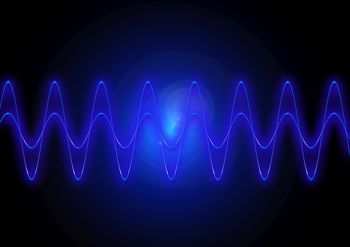 What Is Blue Light and Why Is It Damaging?
What Is Blue Light and Why Is It Damaging?
Sunlight contains a broad spectrum of light, including red, orange, yellow, green, and blue light rays. All of these have varying degrees of energy and different wavelengths. Those with longer wavelengths contain less energy, and those with shorter, faster wavelengths have more energy.
Blue light waves are at the high end of the spectrum, so they have shorter wavelengths and more energy.
Sunlight is the main source of blue light, and getting some exposure each day is critical to our good health. Sunlight (including blue light) gives us the vitamin D we need, increases focus and alertness, boosts mood, supports cognitive function and memory, and helps maintain healthy circadian rhythms.
Blue light is like chocolate, though. We can get too much of a good thing, and our eyes suffer the consequences. In today’s tech-advanced world, it’s much easier than it used to be to get too much.
Most technological products—including fluorescent and LED lights, flat-screen televisions, computer displays, tablets, smartphones, and other digital devices—emit blue light. They don’t produce as much as the sun does, but the problem is we spend a lot of time gazing at them, hour after hour, day after day, year after year.
That, combined with how close the screens usually are to our eyes, is what may lead to eye damage and vision problems over time.
The human eyeball does a pretty good job of protecting itself from the sun’s UV rays. It stops a lot of them from reaching the light-sensitive retina at the back of the eye. Of course, it can’t block all of them, which is why we wear sunglasses.
The eye has little defense against blue light, though. Blue light can pass right through the eyeball to the retina, where it can damage the retina and the vulnerable macula at the center of the retina. That’s why blue light, in particular, is considered so dangerous to our vision.
NOTE: Exposure to blue light at night can also block your body’s secretion of the sleep hormone melatonin, negatively affecting your sleep and consequently, your health.
7 Ways to Protect Your Eyes from Damaging Blue Light
Fortunately, there are many products out there today that can help protect your eyes and increase your odds of enjoying sharp vision for years to come.
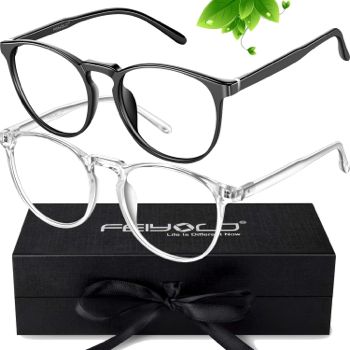 1. Blue Light Blocking Glasses
1. Blue Light Blocking Glasses
Blue light blocking glasses have specially crafted lenses that filter out some of the blue light emitted from digital screens. They can help ease eyestrain and allow your eyes to feel more comfortable throughout the day.
All blue light glasses aren’t the same, however. You may have noticed that they come in different colors. In general:
- Clear lenses help relieve digital eye strain but block the lowest amount of blue light of all colors.
- Yellow lenses block more blue light than clear ones do.
- Orange lenses block even more yet. They seem to be the most popular color in blue-light glasses today.
- Red lenses block the most blue light, but they may block too much. Remember we need some blue light exposure for good health. These glasses can be effective if you’re using your computer and other technological gadgets at night.
In general, if you’re going to be using your glasses during the day, it’s probably best to choose clear or yellow lenses. Then save your orange and red ones for the hours before bedtime. If you need to be able to see colors accurately in your work, choose the clear lenses.
Keep in mind that blue light blocking glasses don’t have to be super expensive. There are many effective ones available for around $20. One popular example is the Feiyold blue light blocking glasses for men and women.
2. Blue Light Prescription Glasses
Though there are some clip-on blue light glasses on the market, if you wear prescription glasses, you may prefer to get blue-light-filtering lenses on them. For these, talk to your eye doctor or take your prescription to your local eyeglass store and ask about blue light protection. It usually costs a little more to add the blue-light filter, but for you, it may be worth it to avoid having to put other glasses on top of your regular ones.
It is important to ask your doctor about the extent of the blue-light protection. Many prescription lenses don’t block as much blue light as standard blue light glasses do. It depends on your preference which you’d rather have, but go into the purchase informed.
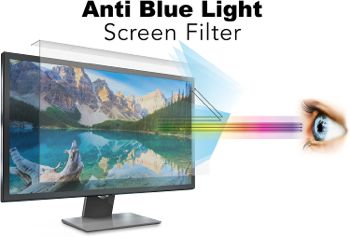 3. Screen Filters
3. Screen Filters
You can now find blue-light filters for your desktop computers, laptops, tablets, and phones. They cover the screens themselves to decrease the amount of blue light given off, reducing the amount that reaches your eyes.
Below are a few examples of filters you might use:
- EZ-Pro Screen Protector: Built for your desktop, this filter comes in a variety of sizes and helps reduce eyestrain and fatigue.
- Forito Laptop Screen Protector: This filter blocks blue light and glare for daily vision protection.
- SuperguardZ Screen Protector for iPad: Designed for the iPad 10.2, this filter protects your eyes from blue light while protecting your iPad screen. There are other filters for other types of tablets as well.
- Zagg Visionguard: Made for the Samsung Galaxy S10+, this filter absorbs impact, disperses shock, and filters harmful blue light.
4. App Filters
Most modern cell phones (and many tablets and computers) come with apps that help reduce the amount of blue light you’re exposed to throughout the day. Check your display settings to see if you can find one.
If you don’t already have an app on your machine, you can easily get one. Following are several popular filtering apps that can change the brightness and colors on your screen to help reduce eyestrain.
Keep in mind that these apps may not create as sharp an image as what you can get with a filter. In many cases, a physical filter provides a clearer image while still protecting you from blue light.
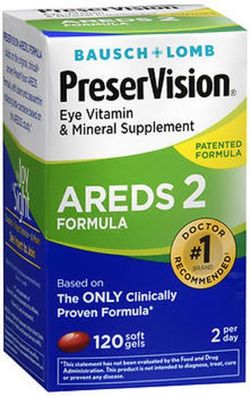 5. Eye Vitamins
5. Eye Vitamins
The macula at the back of the eye—the central part of the retina—absorbs much of the blue light that you’re exposed to, and is most susceptible to damage. You can support the health of the macula by making sure you’re getting enough of two key nutrients: lutein and zeaxanthin.
These carotenoids are naturally found in plants, where they absorb excess light energy to prevent cellular damage, particularly from too much blue light.
Lutein and zeaxanthin are also found in high amounts in the macula of the human eye. There, they help protect the macula from damaging blue light and other potentially damaging UV rays. If you’re not getting enough of these nutrients in your diet, your macula could be more vulnerable to blue-light damage.
Several studies have found that lutein and zeaxanthin can either help prevent age-related macular degeneration or slow the progression of the disease. To safeguard your eye health, eat more green leafy vegetables and other green or yellow veggies, and consider taking an eye health supplement that contains lutein and zeaxanthin.
6. Ask About Intraocular Lenses (IOLs)
These are small, implantable (artificial) lenses used to treat cataracts and myopia (nearsightedness). They may also offer some protection against blue light.
If your eye doctor has recommended surgery for cataracts or myopia, ask about IOLs. It’s still unclear how much protection these lenses can provide, so be sure to ask for additional information on any that you’re considering having implanted.
7. Take a Break from the Screen
Whether or not your eyes may be damaged by blue light is completely dependent on how much exposure you get. Therefore, the more you can get away from your screens, the better.
A 2016 survey by the Nielsen Company showed that Americans, on average, spend about 10.5 hours a day looking at one digital device or another. (Um…that’s a lot.)
It can help to keep track of how much time you spend looking at screens per day for a week or so. (The results may surprise you!) Be sure to include all screens, like televisions, computers, tablets, and phones.
Once you know the score, take steps to limit your screen time. Follow these tips:
- Take regular breaks throughout the day. The general rule is to step away every 20 minutes and look at something 20 feet away for at least 20 seconds. It helps if you have a window near your office. If not, consider taking a short walk outside or going to a window to look at a distant object.
- Print it out. Get used to doing anything you can with real paper and ink. Printing something out works great for editing.
- Cut back a bit. Once a day, choose another activity besides checking your phone or searching the Internet. It could be reading a (printed) book or magazine, going for a short walk, spending some time with a pet, or working on a puzzle. Make it a habit to have other activities you can turn to during your downtime.
- Take some time off. At least once a week, completely avoid your screens. You may decide to take Sunday night off, for example, or wait until noon on the weekends to turn any of your gadgets on.
Sources
The Nielsen Company. “The Total Audience Report: Q1 2016.” Nielsen Global Connect | Nielsen Global Media – Nielsen. Accessed July 13, 2020. https://www.nielsen.com/us/en/insights/report/2016/the-total-audience-report-q1-2016/.
Zhao, Zhi-Chun. “Research progress about the effect and prevention of blue light on eyes.” International Journal of Ophthalmology 11, no. 12 (2018), 1999–2003. doi:10.18240/ijo.2018.12.20.

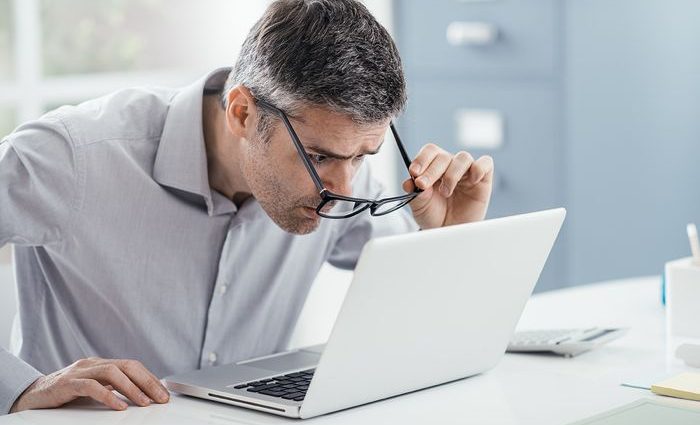
Thank you! I am all in favour of lutein. This is found in orange and yellow fruit and veg like apricots, oranges and yellow peppers, sweetcorn, as well as greens. Lutein helps against strong sunlight too which is useful if you live in a hot area or by water – the reflections can be just as bad as the original light.
I don’t see a mention that you should moisturise your eyelids, preferably with water based cream but oil based will do. If your eyelids are dry the eye surface dries out faster and your eyes get sore and tired. Women tend to apply moisturiser more than men do.
Thanks for the tips, Clare! :O)
I use the Twilight app on my mobile. It does make a difference.
Thanks, Rachel! Glad it works for you. :O)